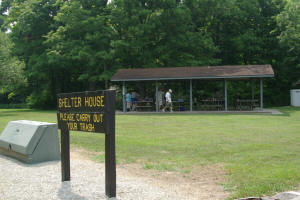
This year, the Dry Dredgers hosted the annual cook-out and joint field trip with our closest neighboring fossil club, the Kentucky Paleo Society, based in Lexington. Our choice was a tour of the famous road cuts in Brookville Indiana, after a relaxing picnic at one of Brookville Lake's picnic areas.
Dry Dredgers field trip chair Bob Bross was the grill master
this year with a some yummy hamburgers and hot dogs.
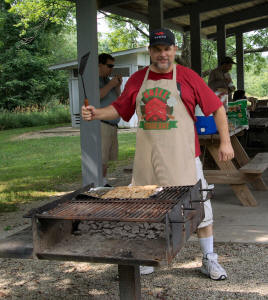
Every year we seem to forget something we need. This year, it was a lighter to start the charcoal. After struggling with an automobile cigarette lighter, Bob and I were successful without blowing up ourselves or our vehicles.
The picnic is kind of like a meeting, in that we have door
prizes, donated by the attendees. We also had some great give-always for the
taking (Phacops trilobites in shale from the Penn-Dixie field trip).
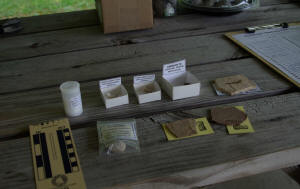
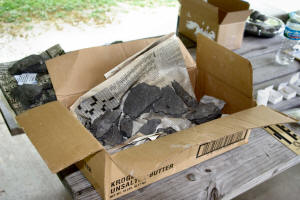
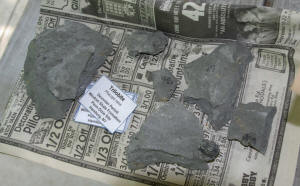
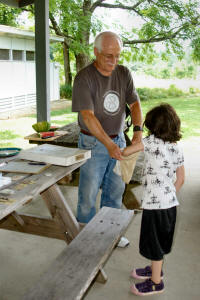
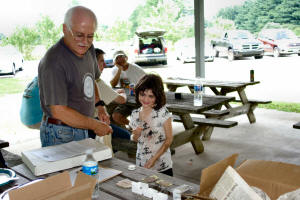
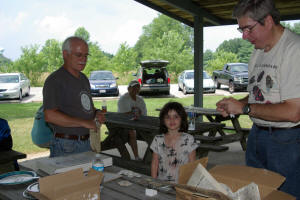
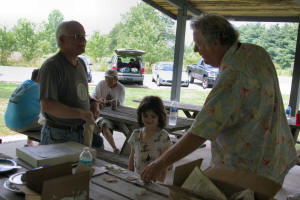
Once we had our fill of food and fun, Bill Heimbrock guided
the group to our first fossil site and had printed information to hand out about
the sites. These sites expose the Waynesville and Liberty formations of the
Richmondian Stage of the Cincinnatian Series. The rocks and fossils exposed here
are about 437 million years old.
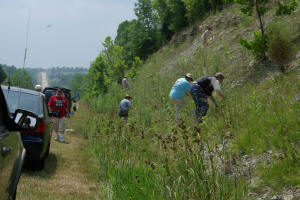
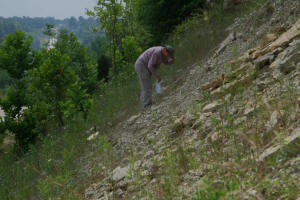
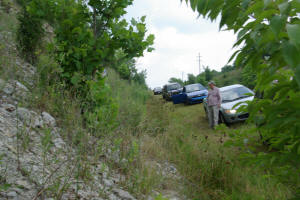
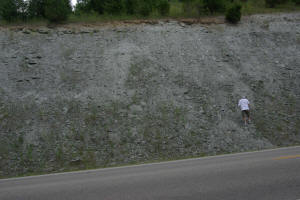
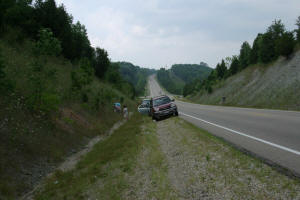
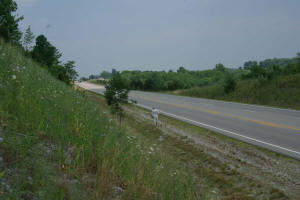
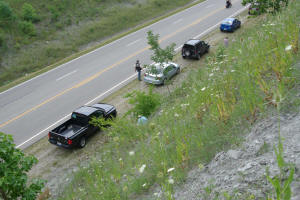
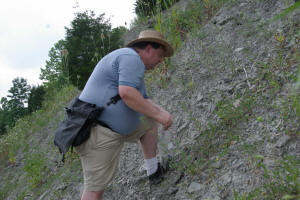
Some of the fossils found that day.
We almost always find at least one complete enrolled trilobite
of the most common variety, Flexicalymene
retrorsa.
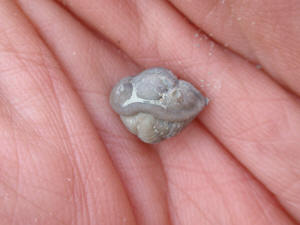
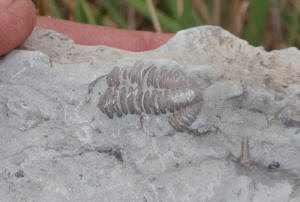
A prone Flexicalymene was also found.
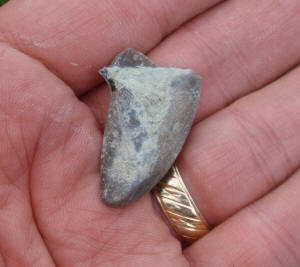
Here is one lobe of the hypostome (mouth plate) of the large trilobite, Isotelus.
Probably the most interesting find that I recall was a giant Ostracod.
We have seen them this
large before at this same site, but they are usually much smaller.
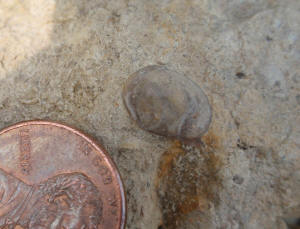
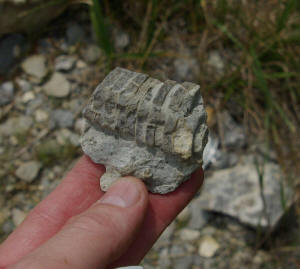
A fragment of a straight shelled Nautiloid Cephalopod, showing the siphuncle
running down the center.
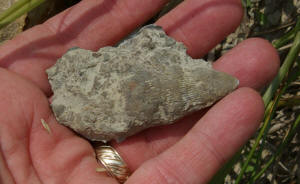
A solitary coral (Horn Coral) by the name of Grewingkia canadensis.
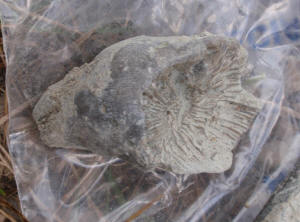
A smaller solitary coral that is probably Streptelasma.
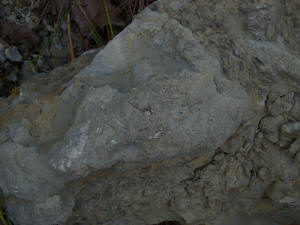
A colonial coral called Tetradium.
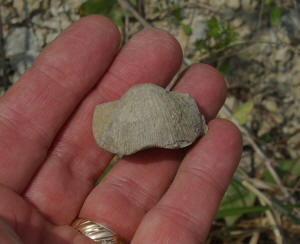
The common and easy to identify Brachiopod, Hebertella.
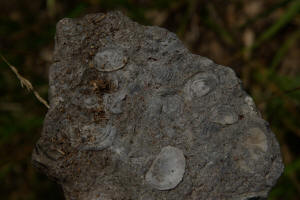
Another common brachiopod with a range beyond the Cincinnatian Series, is Leptaena
richmondensis.
One of our most knowledgeable amateur members, Ron Fine, got
excited about finding an articulated ramose (branching) Bryozoan.
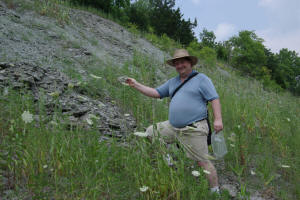
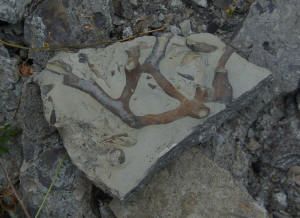
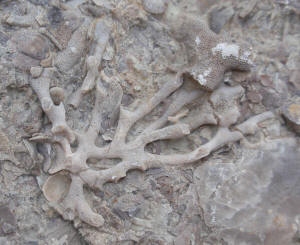
Pelecypods (bivalves also known as clams)
There were quite a few varieties of clams found that day.
Caritodens (two pictures below)
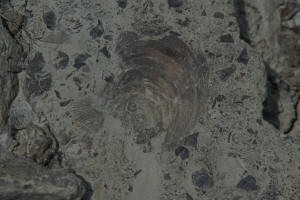
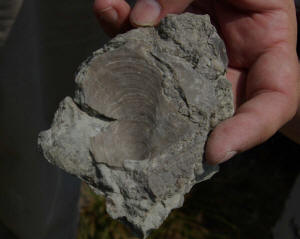
And some elongated clams that I'm not sure of their identity.
When there is no shell remaining and it's just an internal mold, they lack most
of what's needed to identify the genera.
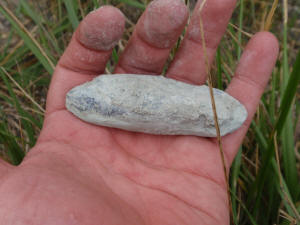
Snails are the same way. Internal molds are hard to identify.
Here's one found that day (below).
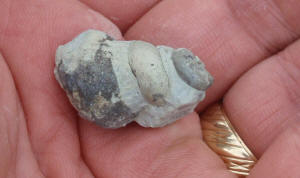
Here is a living example of a snail I saw that day. Living
animals provide paleontologists with an analogy for understanding from what our
fossils came.
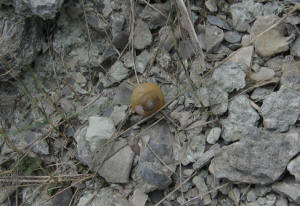
That's all for this month. August was too hot, but here are the photos from our September 2011 field trip.
Here are our previous trips to Brookville, Indiana
April 2006
March 2005
April 2003
Return to Index of Field Trips
Return to Dry Dredgers Home Page
The Dry Dredgers and individual contributors reserve the
rights to all information, images, and content presented here. Permission to
reproduce in any fashion, must be requested in writing to admin@drydredgers.org.
www.drydredgers.org is designed and maintained by Bill Heimbrock.